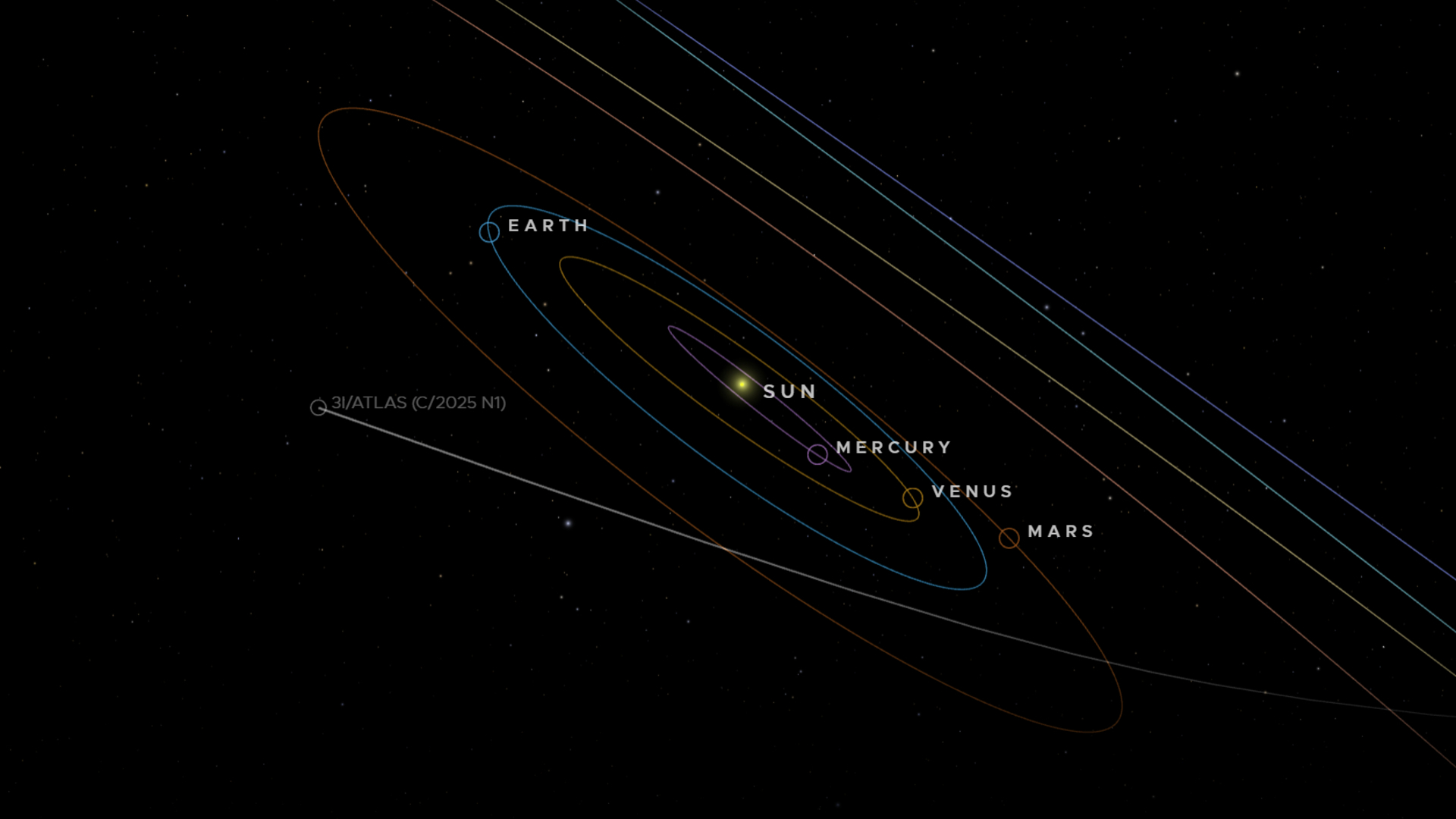Watch Relativity Space abort the launch of Terran 1, world's 1st 3D-printed rocket, on second try
Update for 4 pm ET: Relativity Space aborted its debut flight of a Terran 1 rocket for a second time on March 11, with the company standing down for the day. A new launch date will be announced as it is available. Read our wrap story.
Relativity Space's Terran 1 rocket, the world's first 3D-printed launcher, will fly for the first time Saturday (March 11), and you can watch the action live.
The 110-foot-tall (33 meters) Terran 1 is scheduled to lift off from Cape Canaveral Space Force Station in Florida on Saturday during a three-hour window that opens at 1 p.m. EST (1800 GMT).
You can watch the orbital test flight — called "Good Luck, Have Fun," or GLHF for short — here at Space.com, courtesy of Relativity Space, or directly via the company. Saturday's attempt will be the second for Terran 1, after a try on Wednesday (March 8) that was scrubbed due to fuel-temperature issues on the rocket's upper stage.
Related: Relativity Space to launch satellite 'tugs' on 3D-printed rocket
GLHF is a landmark mission for Relativity Space, and for spaceflight technology in general: The two-stage Terran 1 is the first rocket ever built primarily via 3D printing. This first Terran 1 is about 85% 3D-printed by mass, though the company aims to boost that to 95% on future vehicles.
One key goal of Saturday's test flight, therefore, is to show that the vehicle is robust enough to handle the rigors of launch.
Breaking space news, the latest updates on rocket launches, skywatching events and more!
"As for flight success, safely clearing the pad, getting out over the ocean and passing Max-Q would be a big inflection point for today's launch," Relativity Space representatives told Space.com via email. "Max-Q is the point where the structural loads on the vehicle are the highest, making it one of the most challenging phases of flight, so passing this milestone would effectively demonstrate that 3D-printed rockets are structurally viable, in addition to already successfully completing acceptance testing on the ground at our factory at these max stresses."
Getting all the way to low Earth orbit (LEO), they added, "would be a total home run."
The Terran 1 won't deploy anything even if it does make it to LEO; the rocket isn't carrying a viable payload, just a commemorative 3D-printed metal ring that weighs about 3.3 pounds (1.5 kilograms), according to EverydayAstronaut.com.
California-based Relativity Space was founded in 2016 by Tim Ellis and Jordan Noone, both of whom had worked at Blue Origin. Noone was employed by SpaceX as well.
The Terran 1 uses methane as a propellant and liquid oxygen as an oxidizer. It will be the first U.S.-developed "methalox" rocket to attempt an orbital launch, and it could be the first such vehicle worldwide to reach orbit. (Beijing-based company Landspace's Zhuque-2, a methalox rocket, launched in December 2022 but failed to reach orbit.)
The expendable Terran 1, which is powered by nine of Relativity Space's Aeon engines in its first stage and one in its upper stage, can deliver up to 2,756 pounds (1,250 kg) to LEO, according to Relativity Space. But the company is developing something much larger and more powerful.
Indeed, the Terran 1 is a developmental step toward the Terran R, a reusable rocket designed to carry up to 44,100 lbs (20,000 kg) to LEO. The 216-foot-tall (66 m) Terran R could fly for the first time as early as next year, company representatives have said.
"Terran 1 serves as a pathfinder and development platform on our path to Terran R production," Relativity Space representatives said the email to Space.com. "Terran 1 has served us exceedingly well in this capacity leading up to our first launch, and we anticipate additional key learning will come from launch day as well."
Editor's note: This story was corrected at 4 p.m. EST on March 8 to state that Relativity Space was founded in 2016, not 2015. It was updated at 1 p.m. EST on March 10 with details of the new launch date and the March 8 scrub.
Space.com writer Elizabeth Howell contributed to this story.
Mike Wall is the author of "Out There" (Grand Central Publishing, 2018; illustrated by Karl Tate), a book about the search for alien life. Follow him on Twitter @michaeldwall. Follow us on Twitter @Spacedotcom or Facebook.

Michael Wall is a Senior Space Writer with Space.com and joined the team in 2010. He primarily covers exoplanets, spaceflight and military space, but has been known to dabble in the space art beat. His book about the search for alien life, "Out There," was published on Nov. 13, 2018. Before becoming a science writer, Michael worked as a herpetologist and wildlife biologist. He has a Ph.D. in evolutionary biology from the University of Sydney, Australia, a bachelor's degree from the University of Arizona, and a graduate certificate in science writing from the University of California, Santa Cruz. To find out what his latest project is, you can follow Michael on Twitter.

